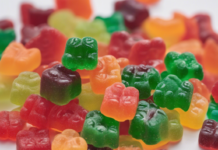Introduction
Shammi Kebab is a popular dish in South Asian cuisine, known for its rich flavor and aromatic spices. What if we told you that you could grow a plant that produces ingredients commonly found in Shammi Kebabs? Yes, we are talking about the Shammi Kebab plant, which not only adds beauty to your garden but also provides fresh and flavorful herbs for your cooking adventures.
What is the Shammi Kebab Plant?
The Shammi Kebab plant, also known as Mint (Mentha), is a perennial herb that belongs to the Lamiaceae family. It is widely cultivated for its culinary and medicinal uses. Mint is characterized by its distinct aroma and flavor, making it a popular choice in various dishes, including the iconic Shammi Kebab.
Growing Conditions
1. Sunlight: Mint plants thrive in partial to full sunlight. Ensure that your plant receives at least 4-6 hours of sunlight daily.
2. Soil: Mint prefers well-draining soil with a slightly acidic to neutral pH level (6.0-7.0). Adding compost can improve soil quality and drainage.
3. Watering: Mint requires consistent moisture, so water the plant regularly. However, avoid over-watering to prevent root rot.
4. Temperature: Mint plants prefer moderate temperatures between 65-70°F (18-21°C). Protect them from extreme heat or cold.
Planting and Propagation
1. Planting: Mint can be grown from seeds, cuttings, or transplants. Plant seeds 1/4 inch deep in soil or transplant seedlings, ensuring they are spaced 12-24 inches apart.
2. Propagation: Mint is known for its vigorous growth and can quickly spread in the garden. To control growth, consider planting mint in containers or using a barrier to prevent its spread.
Care and Maintenance
1. Pruning: Regular pruning promotes bushier growth and prevents the plant from becoming leggy. Trim the stems regularly to encourage new growth.
2. Fertilization: Mint plants are not heavy feeders, but you can apply a balanced fertilizer once a month during the growing season to support their development.
Harvesting
1. Timing: You can start harvesting mint leaves once the plant establishes itself, usually after 3-4 weeks. Pinch off the top leaves to encourage lateral growth.
2. Method: Harvest mint leaves by snipping them off with scissors or gently plucking them by hand. Leave some leaves on the plant to promote continuous growth.
Uses of Shammi Kebab Plant
1. Culinary Delights: Use fresh mint leaves to enhance the flavor of various dishes, including Shammi Kebabs, chutneys, salads, and drinks.
2. Medicinal Purposes: Mint is known for its therapeutic properties, such as aiding digestion, relieving headaches, and freshening breath.
Pests and Diseases
1. Pests: Mint plants are relatively resistant to pests; however, keep an eye out for common culprits like aphids, spider mites, and caterpillars. Neem oil or insecticidal soap can help control infestations.
2. Diseases: Mint can be susceptible to fungal diseases like powdery mildew and rust. Ensure good air circulation around the plant and avoid overhead watering to prevent these issues.
FAQs (Frequently Asked Questions)
1. Can I grow mint indoors?
Yes, mint thrives indoors if provided with sufficient sunlight and adequate moisture. Choose a sunny spot near a window and water the plant regularly.
2. How often should I fertilize my mint plant?
Fertilize mint plants once a month with a balanced fertilizer during the growing season. Avoid over-fertilization, as mint does not require heavy feeding.
3. Is it safe to consume mint leaves directly from the plant?
Yes, mint leaves are safe to consume directly from the plant. Rinse them thoroughly before use to remove any dirt or insects.
4. How do I prevent mint from spreading uncontrollably in my garden?
To contain mint’s growth, plant it in containers or use barriers like buried pots or garden edging. Regularly trim the plant to control its spread.
5. Can I dry mint leaves for later use?
Yes, you can dry mint leaves for later use. Hang the stems upside down in a well-ventilated area away from direct sunlight until the leaves are dry. Store them in an airtight container.
6. How do I propagate mint plants from cuttings?
To propagate mint from cuttings, snip a 4-6 inch stem from a healthy plant, remove the lower leaves, and place it in water or moist soil. Roots will develop in a few weeks.
7. Why are the leaves of my mint plant turning yellow?
Yellowing leaves on mint plants can indicate over-watering, nutrient deficiency, or inadequate sunlight. Adjust the watering schedule, fertilize the plant, and ensure it receives enough sunlight.
Conclusion
Growing a Shammi Kebab plant in your garden can not only elevate your culinary experiences but also add a refreshing touch to your dishes. By following the tips and tricks mentioned above, you can cultivate a thriving mint plant that provides you with an abundance of fresh leaves for your cooking adventures. Happy gardening and happy cooking!












